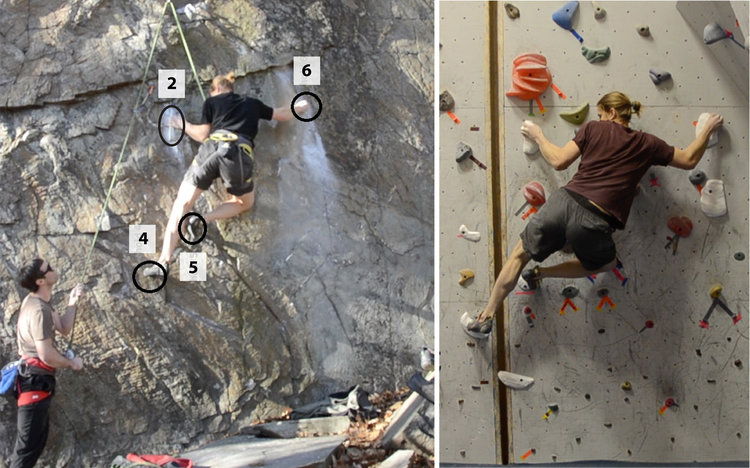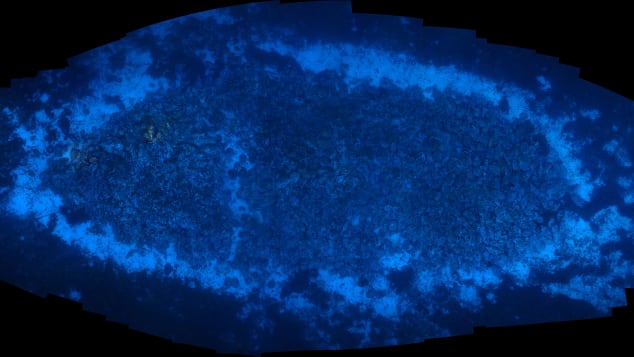Simulate a real mountain climb with 3D modeling and digital fabrication
On Saturday, Alex Honnold became the first climber to complete a solo, ropeless climb of Yosemite’s 3,000-foot El Capitan wall. National Geographic described his accomplishment as “what may be the greatest feat of pure rock climbing in the history of the sport.” Even with more than 20 years of experience climbing, Honnold spent more than a year secretly training for this specific climb at various locations in the United States, China, Europe, and Morocco.
While he was honing his skills to take on the historic climb, a group of Dartmouth College-led researchers used the latest technology to take on the challenge of rock climbing from a completely different angle: They used 3D scanning, 3D modeling, and digital fabrication to recreate actual outdoor climbing paths on an indoor climbing wall.
The team’s work caught the attention of CNN, which stated, “While outdoor routes have long served as an inspiration for indoor climbing gyms, the team’s approach would allow climbers to actually test out a real-life route without having to travel there.”
These reconstructions were not identical replicas of their real-world counterparts. That would have been cost-prohibitive. Instead, the team zeroed in on how humans interact with the outdoor climbs. The reconstruction focused on the key rock features the climbers used to ascend difficult climbing routes or cruxes. This way, they could reconstruct the difficulty of the climb on an indoor structure without recreating the entire mountainside. The team’s research project was presented at the 35th annual Association for Computer Modeling Conference on Human Factors in Computing Systems in Denver.
“By fabricating only key pieces of the rock face, we’re able to recreate outdoor environments without the need for oversized gantries or other non-standard manufacturing equipment,” claimed Emily Whiting, lead author and an assistant professor of computer science at Dartmouth College.
Recreating the crux
The recreations were based on cruxes from two expert climbing sites in New Hampshire and Utah. Multi-view stereo images were captured of rock climbers ascending the cruxes. This provided a 3D view of the climber’s body positioning.
The video was used to estimate the 3D skeletal poses of the climber, showing the location of his hands and feet. It also was used to estimate the contact force directions. This enabled the researchers to identify which portions of the mountainside must be recreated: Only the portions where the climber contacted the mountain’s surface.
Once the routes, rock features, and contact points were 3D modeled, the team created two versions of each climbing hold. One was created with a 3D printer, while the other was carved from high-density foam using a computer-guided router. The two sets were used for texture comparison. The team found the set created with the foam molds had a more realistic surface texture.
When the rock holds were fabricated, the team had to locate the holds precisely in an indoor climbing gym. For this, they mapped the location of T-nut fasteners on the climbing gym wall. This is where the molds were bolted. MATLAB circular Hough transformation was used to identify the T-nuts in the gym wall photos. They then optimized to find the best connection point for each climbing hold to accurately recreate the outdoor climb.
Recreating the climb
The team then had the climbers ascend the recreated crux at the indoor gym. The new climb was also videotaped. The study found the same climber would use almost identical body poses on the recreated crux, indicating the copy of the route was successful. This shows that climbers of all skill levels could train for climbs of specific mountains without traveling to them. Maybe we’ll see an indoor version of Yosemite’s El Capitan next!
 Cleve’s Corner: Cleve Moler on Mathematics and Computing
Cleve’s Corner: Cleve Moler on Mathematics and Computing The MATLAB Blog
The MATLAB Blog Guy on Simulink
Guy on Simulink MATLAB Community
MATLAB Community Artificial Intelligence
Artificial Intelligence Developer Zone
Developer Zone Stuart’s MATLAB Videos
Stuart’s MATLAB Videos Behind the Headlines
Behind the Headlines File Exchange Pick of the Week
File Exchange Pick of the Week Hans on IoT
Hans on IoT Student Lounge
Student Lounge MATLAB ユーザーコミュニティー
MATLAB ユーザーコミュニティー Startups, Accelerators, & Entrepreneurs
Startups, Accelerators, & Entrepreneurs Autonomous Systems
Autonomous Systems Quantitative Finance
Quantitative Finance MATLAB Graphics and App Building
MATLAB Graphics and App Building










Comments
To leave a comment, please click here to sign in to your MathWorks Account or create a new one.